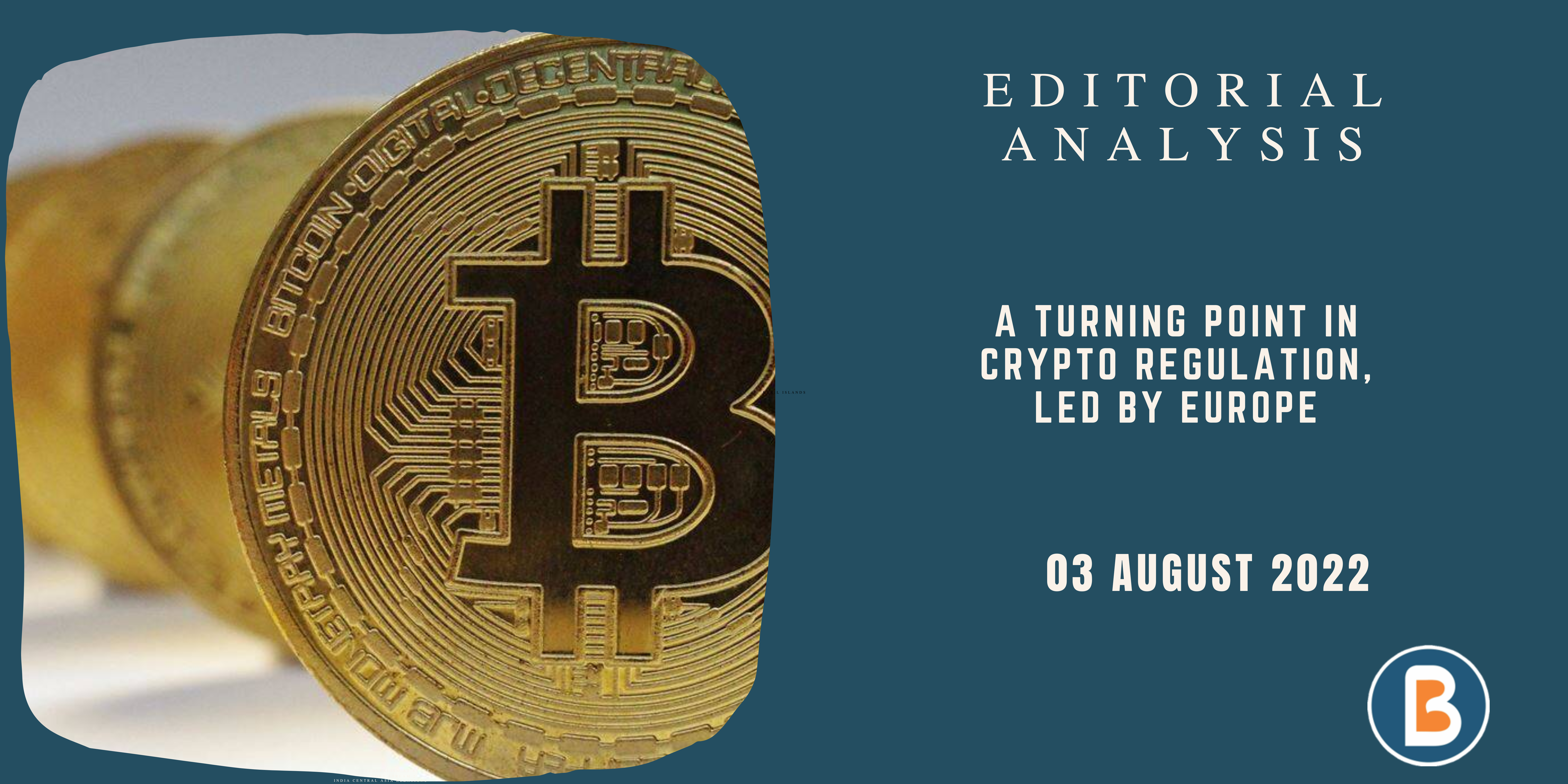A Turning Point in Crypto Regulation, led by Europe
For Mains
The Advantages of Crypto Currency
- Crypto is an Internet-native asset not limited by geographical boundaries.
- To transfer crypto, one does not need a pipeline or shipping container.
- Crypto assets are not issued or controlled by any enterprise hence are market determined which allows for higher transparency.
The concerns about crypto currency
- Regulating crypto currency is not easy.
- Monitoring the flow of capital to and from a country becomes a major point of concern.
- Usage/Misuse of crypto currencies by organised crime groups and even terrorist organisations are a major concern.
What is the Regulation of Markets in Crypto-Assets, or MiCA?
- The European Commission’s Regulation of Markets in Crypto-assets (MiCA) proposal is a regulatory framework developed since 2018 to help regulate currently out-of-scope crypto-assets and their service providers in the EU and provide a single licensing regime across all member states by 2024.
- MiCA aims to “harmonise the European framework for the issuance and trading of various types of crypto token as part of Europe’s Digital Finance Strategy”
- It proposes to regulate crypto asset services and crypto asset issuers.
- By regulating these entities, Europe intends to provide consumer protection, transparency, and governance standards, regardless of the decentralised nature of the technology.
- Then, MiCA goes further to put forth specific regulations for stablecoins, rightly demarcating them from other crypto assets.
- Under MiCA, stablecoin issuers must maintain reserves to cover all claims of the coins, and should implement a process for immediate redemption if and when holders seek one.
What are Stablecoins?
- Stablecoins are cryptocurrencies the value of which is pegged, or tied, to that of another currency, commodity or financial instrument.
- Stablecoins aim to provide an alternative to the high volatility of the most popular cryptocurrencies.
- Stablecoins pursue price stability by maintaining reserve assets as collateral or through algorithmic formulas that are supposed to control supply.
- India can use the European regulation as a model and adapt a suitable legislation to regulate the crypto market in the country.
Source The Hindu
For more updates, Click Here




